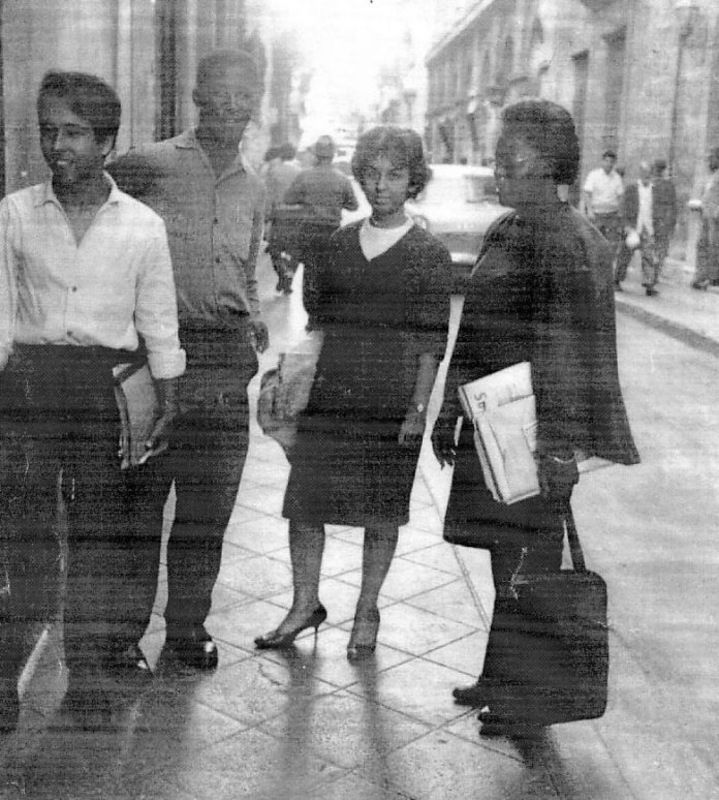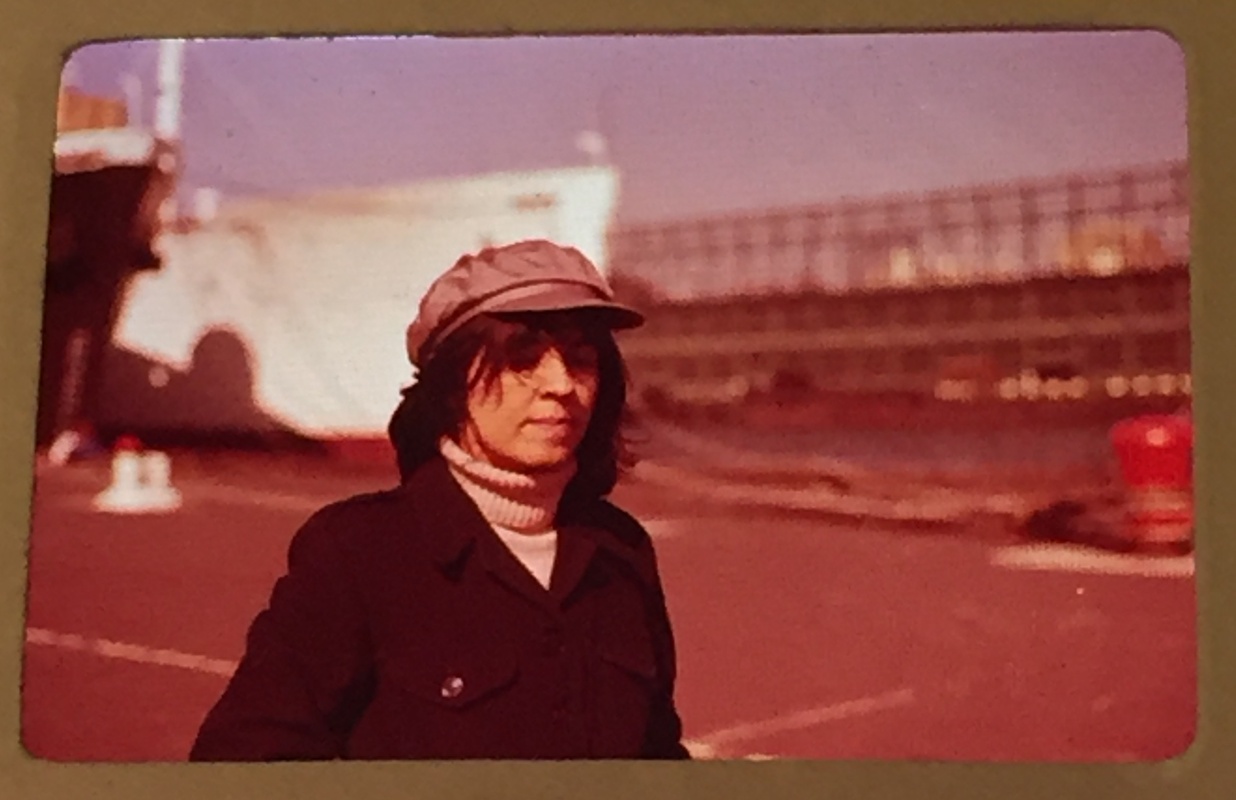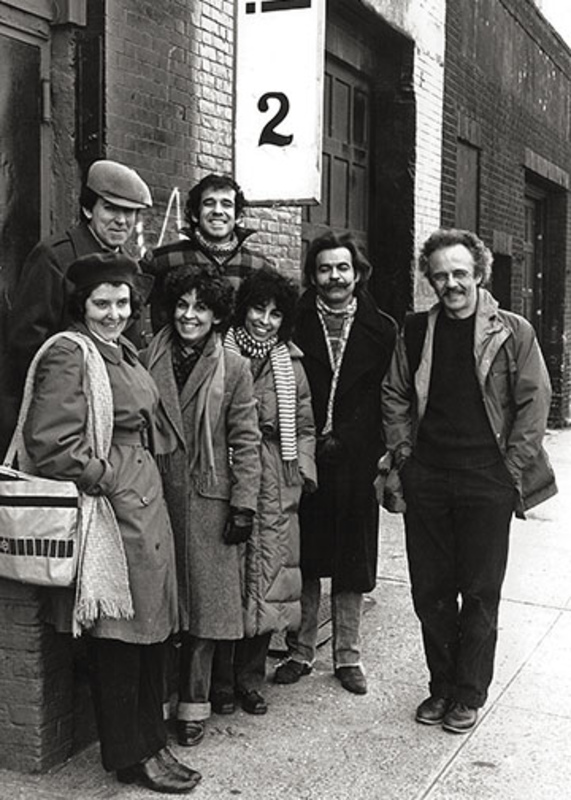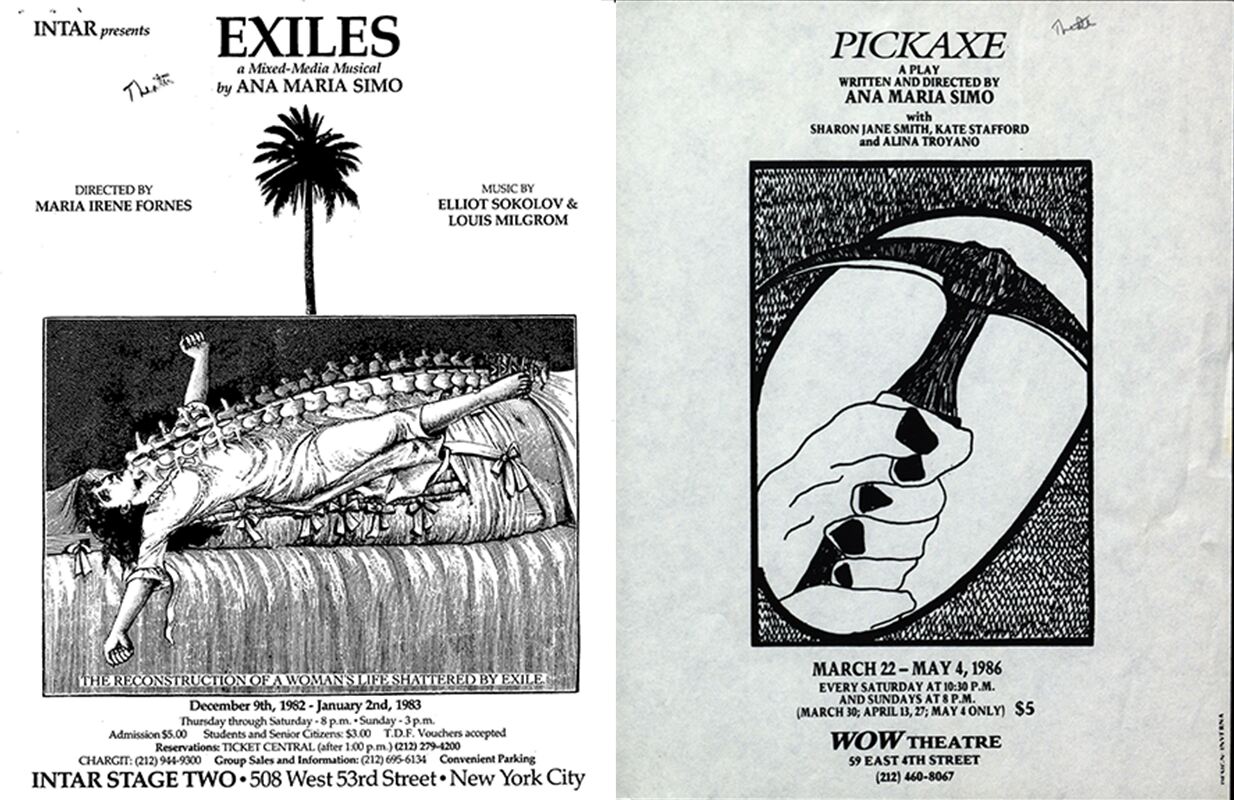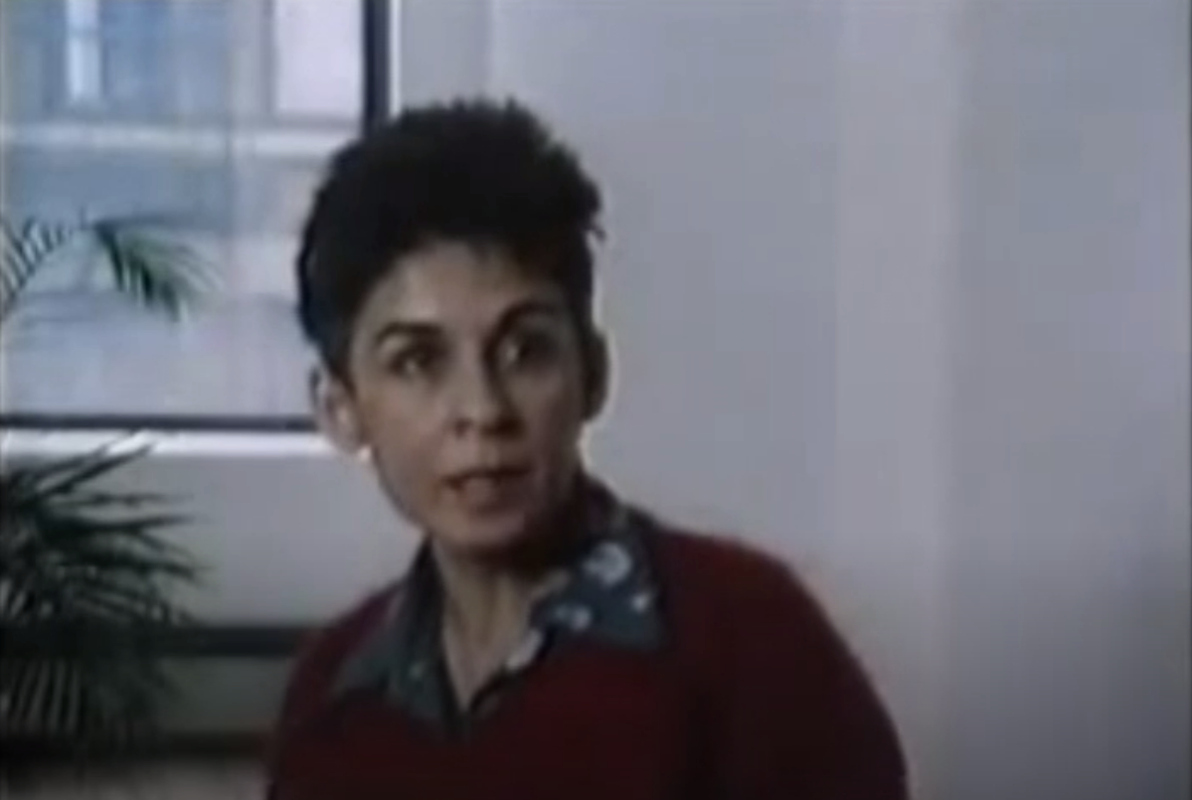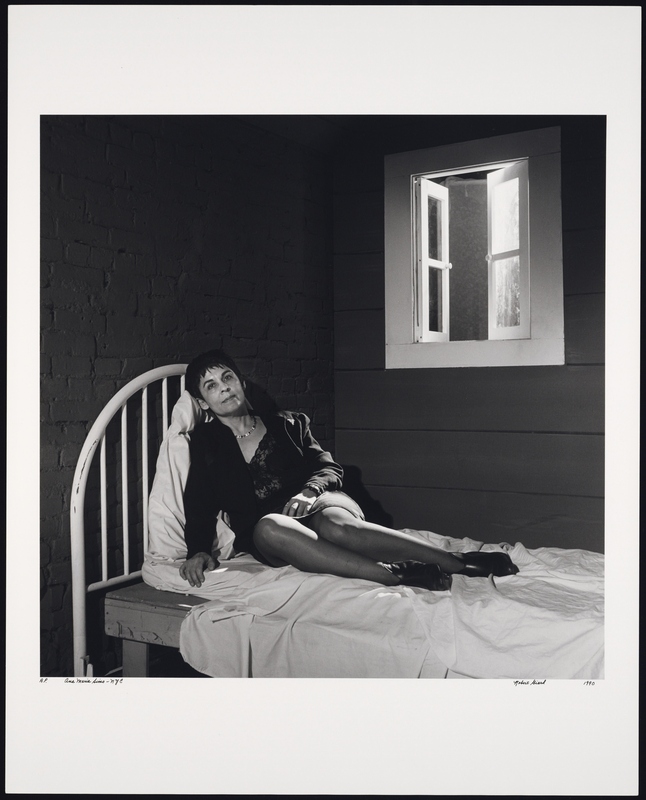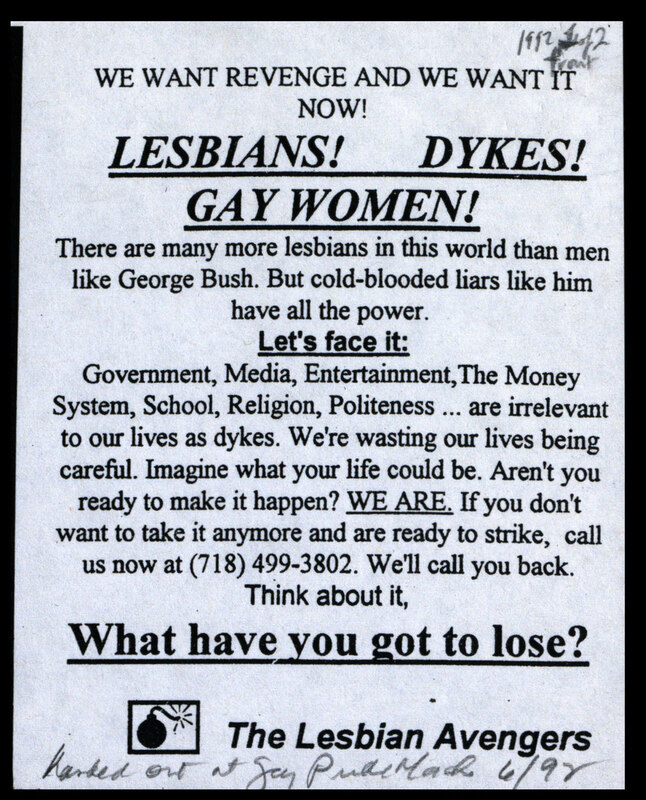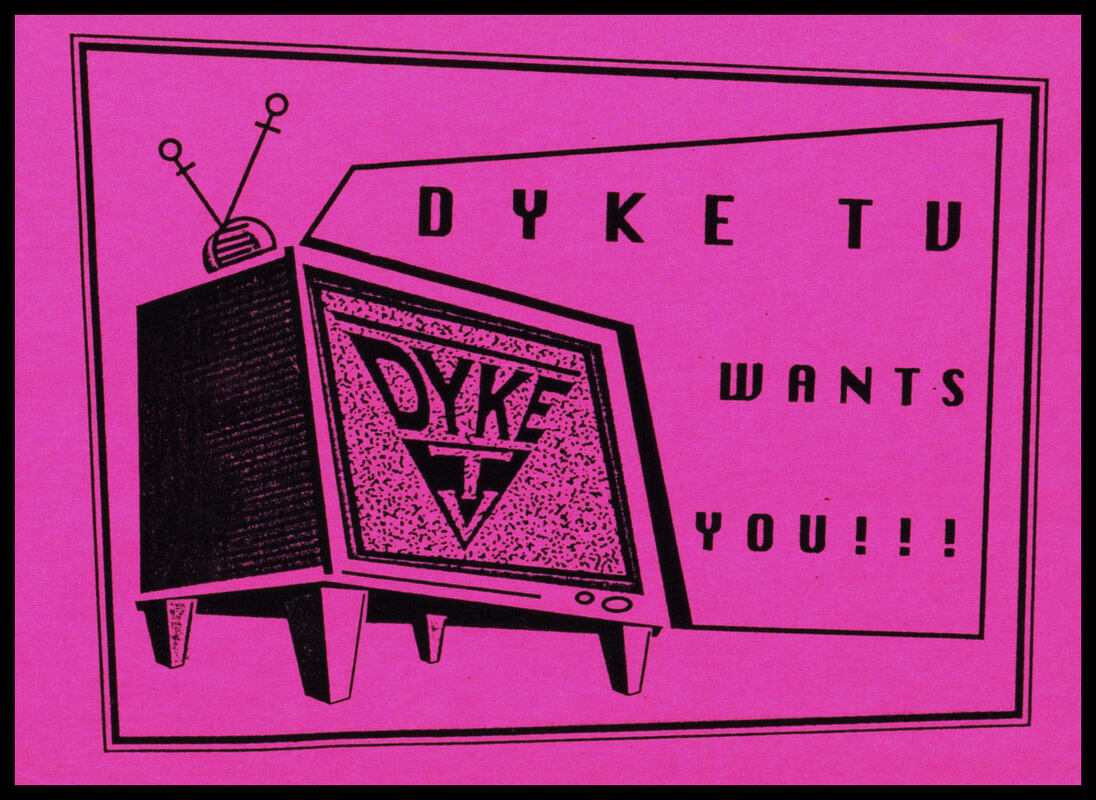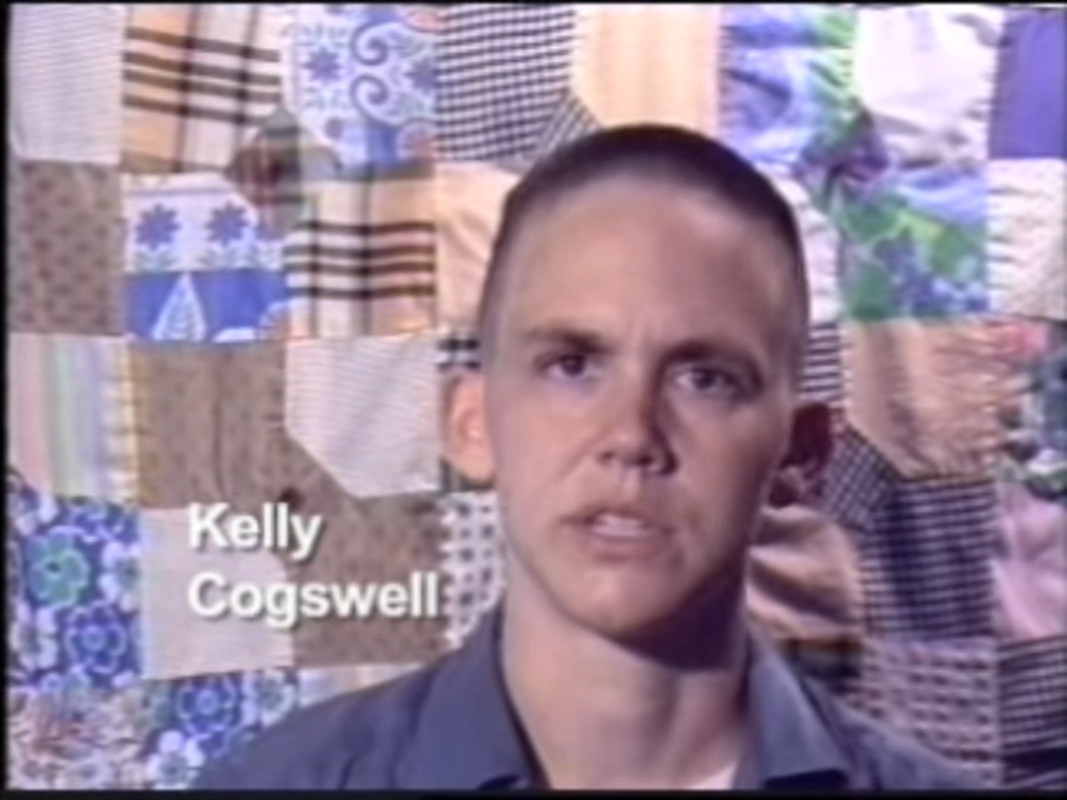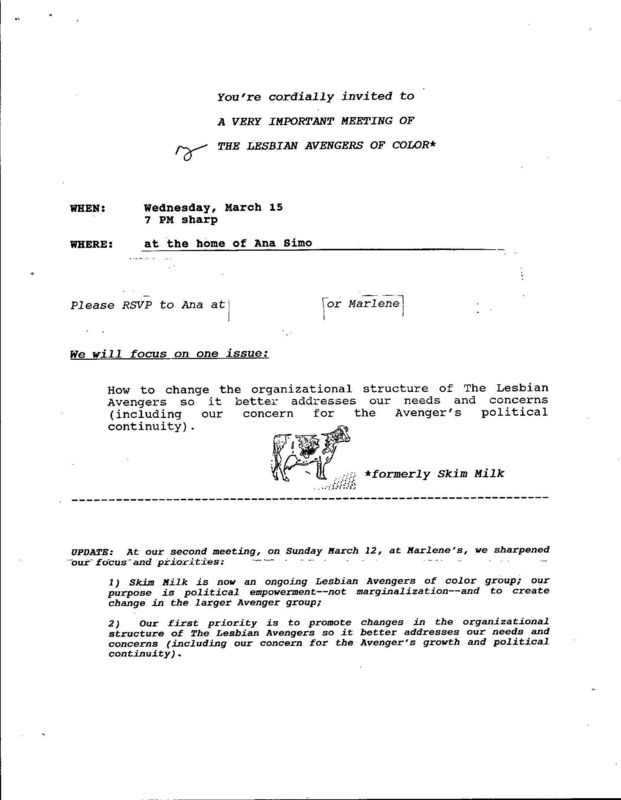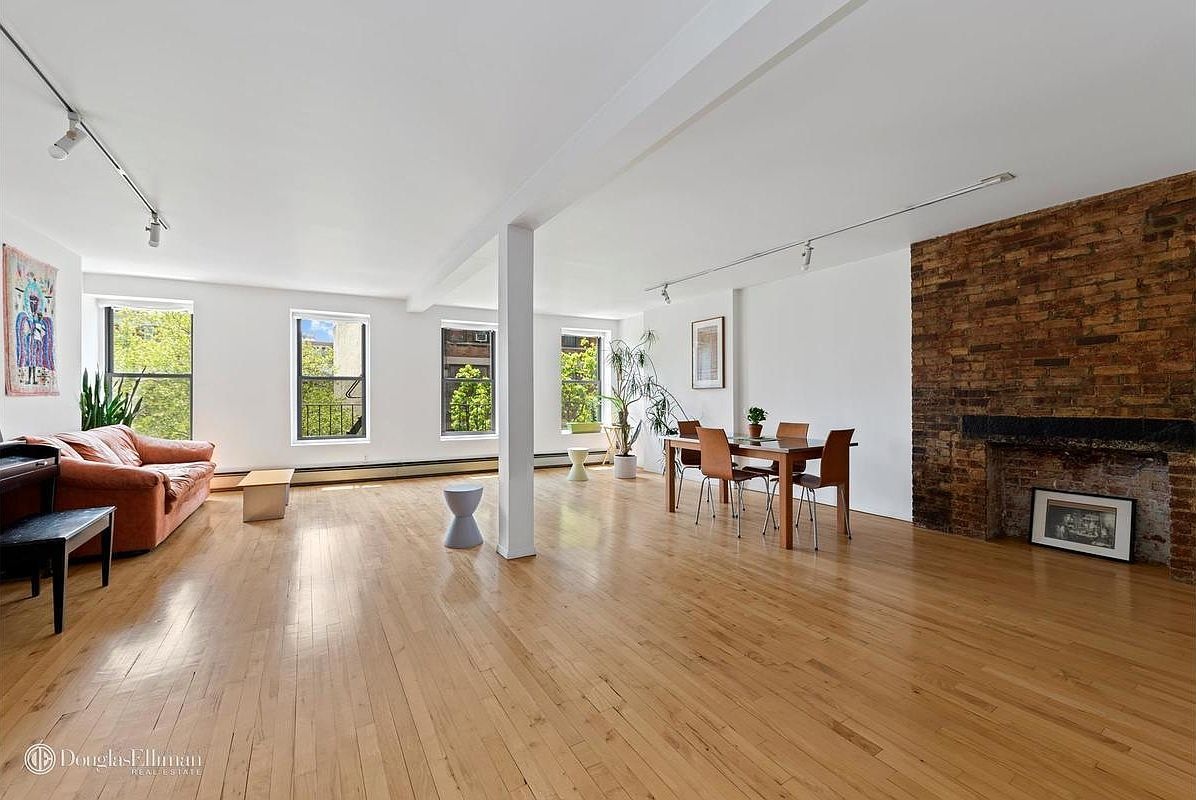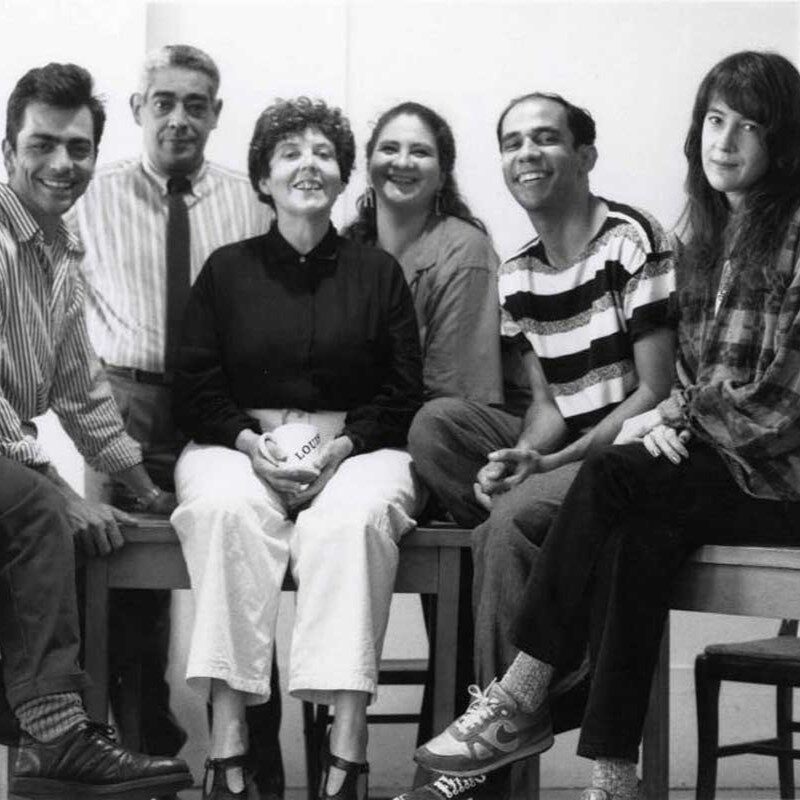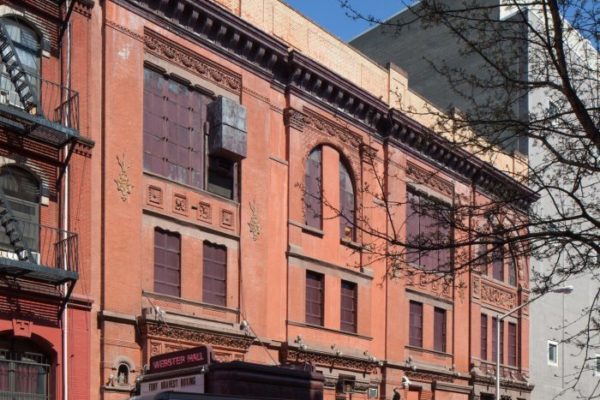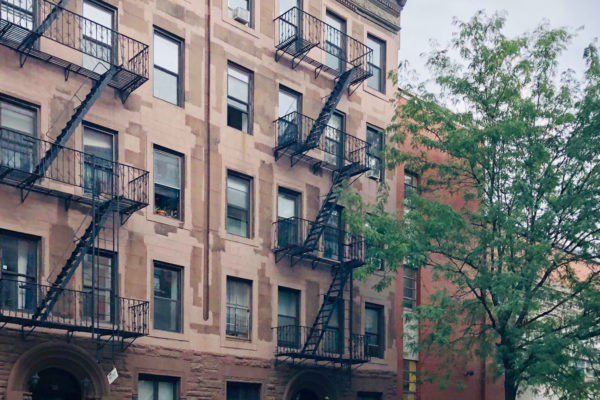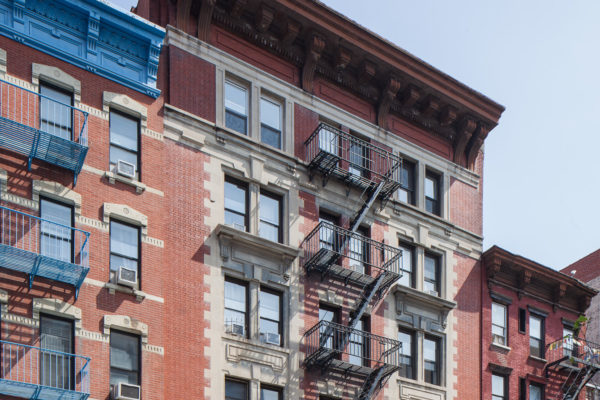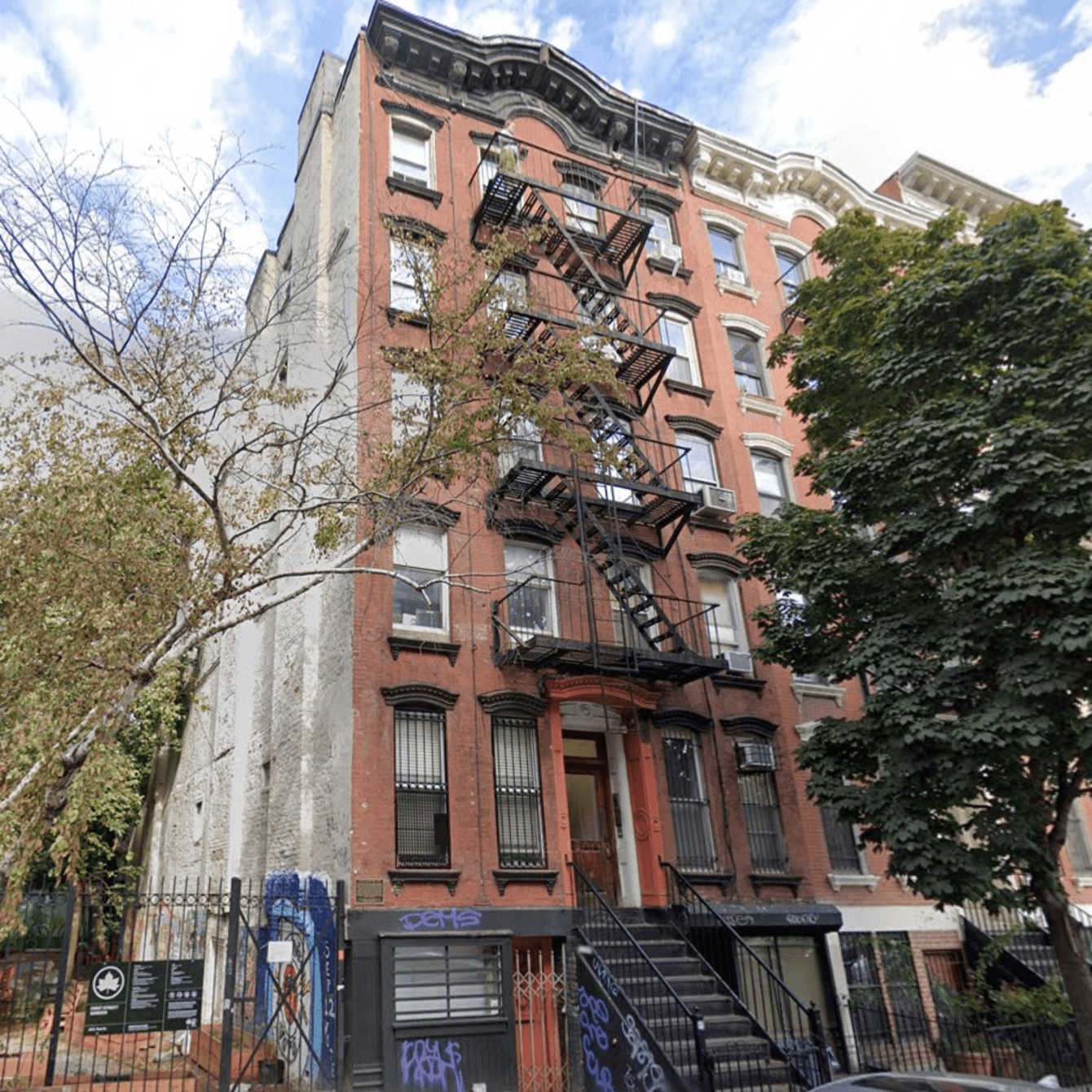
Ana María Simo & Kelly Cogswell Residence
overview
From at least 1983 until 2018, Cuban exile writer, playwright, and activist Ana María Simo owned and lived in the third-floor apartment of this tenement building, where she hosted a dinner in 1992 that culminated in the founding of direct-action group the Lesbian Avengers.
While living here, Simo emerged as a more prolific playwright, established DYKE TV and The Gully online magazine, and led Lesbian Avengers actions and sub-groups focused on issues pertinent to lesbians of color, for which this apartment served as a meeting place.
On the Map
VIEW The Full MapHistory
Ana María Simo (b. 1947) began writing as a teenager with Ediciones El Puente, a Cuban youth literary project that she co-directed with poet José Mario Rodriguez. As an independent group of LGBT, Black, and female intellectuals in post-revolution Cuba, El Puente was regularly persecuted for “dissident” and “degenerate” behavior. In 1964, officials detained and interrogated Simo about her association with homosexuals, then subjected her to electrical aversion therapy, ultimately motivating her to flee Cuba in 1967.
After living in Paris, where Simo first lived openly as a lesbian and became involved in feminist and LGBT activism, she moved to New York in 1972. By at least 1983 — after cofounding the pioneering lesbian theater Medusa’s Revenge — Simo lived in the third-floor apartment of the tenement building at 52 East 1st Street.
In 1982, she joined the María Irene Fornés-led Hispanic Playwrights-in-Residence Lab at INTAR Hispanic American Arts Center (formerly ADAL). Through her decade-long participation in the lab and collaboration with Fornés, Simo wrote multiple plays staged at INTAR, including Exiles (1982), a mixed-media musical billed as “the reconstruction of a woman’s life shattered by exile,” Alma (1988), and Going to New England (1990). Simo also periodically acted and played piano at WOW Café Theater, where she wrote and directed Pickaxe (1986), a play that WOW regular Carmelita Tropicana says “opened WOW to a different aesthetic and deeply influenced its writers.”
By 1992, Simo had grown “enraged by the invisibility of lesbians in the public arena” and by the homophobic backlash to the “Children of the Rainbow” curriculum, so she invited activists Anne-christine d’Adesky, Anne Maguire, Marie Honan, Maxine Wolfe, and Sarah Schulman to dinner at her 1st Street apartment to brainstorm ways of heightening awareness of lesbian issues.
By the end of the dinner, we knew what we wanted to do, how we were going to do it, and what our name was.
That night, after determining a talk-based group would be inadequate, they established the Lesbian Avengers as “a direct-action group using grassroots activism to fight for lesbian survival and visibility.” They typed up recruitment flyers to distribute at the NYC Pride March, selected a logo — a bomb to reflect the group’s revolutionary, anarchist ambitions — and decided their first action would be at P.S. 87 in Queens School District 24, one of the districts that refused to implement the Rainbow Curriculum.
To report on the Avengers’ actions and provide lesbian perspectives on news, art, politics, and more, Simo, theater producer Linda Chapman, and filmmaker Mary Patierno created DYKE TV, a show that sought “to incite, subvert, organize, and provoke.” It first aired on Manhattan Neighborhood Network in June 1993 and became one of the most widely distributed LGBT programs in the US during its 12-year run.
As grassroots organizations, the Avengers and DYKE TV hosted fundraisers at lesbian bars and members’ residences. As such, Simo kept her living room relatively empty for rehearsals, parties, and meetings, including the initial viewing party of Janet Baus and Su Friedrich’s documentary Lesbian Avengers Eat Fire, Too (1993) and a garden party to benefit the 1994 International Dyke March. Journalist and Avenger Kelly Cogswell (b. 1962), Simo’s partner who moved into the apartment in about 1994, recalled that there was little more than “a piano in a niche, tons of plants, a few paintings,” and a couch.
The apartment also became, Cogswell said, “the center of operations…for one of the Avengers’ most daring actions”: infiltrating radio station La Mega 97.9 and the Spanish Broadcasting System Headquarters in 1994. To combat its homophobic, misogynistic, and racist tactics, Simo formed a coalition between the Avengers, Las Buenas Amigas, and African Ancestral Lesbians United for Societal Change (formerly Salsa Soul Sisters), which Washington Blade editor Colleen Marzec called “a turning point for lesbian activism.” After a member toured SBS, they mapped their route with masking tape on Simo’s living room floor. Then, in preparation for a march months later, Simo hosted multiple parties to write chants, make a piñata, paint placards, practice drumming, and teach participants about civil disobedience tactics and their legal rights.
Despite its success, the La Mega Working Group encountered “indifference, fragmentation, hostility, and bigotry” from the Avengers at large, so it reincarnated as CITYAXE “to instigate and organize multi-cultural, multi-racial activism.” Simultaneously, Simo and Marlene Colburn formed Skim Milk/Lesbian Avengers of Color (which also met in Simo’s apartment) “to promote changes in the organizational structure…so it better addresses our needs and concerns.” However, their efforts went unheeded and in 1995, Simo, Cogswell, and the other CITYAXE members left the Avengers.
Although CITYAXE itself disbanded months later, Simo and Cogswell continued their activism efforts by founding The Gully, a pioneering bilingual online magazine offering “queer views on everything,” in 2000. They then split their time between New York and France before selling the 1st Street apartment in 2018.
Entry by Ethan Brown, project consultant (December 2023).
NOTE: Names above in bold indicate LGBT people.
Building Information
- Architect or Builder: Theodore J. Beir
- Year Built: 1872
Sources
Abel Sierra Madero, “Ana María Simo: ‘Cuba es dolorosa. Trato de no verla,’” Hypermedia Magazine (accessed October 21, 2023), bit.ly/3tFtwme.
Amy Parker and Ana Simo, editors, The Lesbian Avenger Handbook: A Handy Guide to Homemade Revolution (New York: The Lesbian Avengers, 1993), bit.ly/49NCluI.
Cassidy George, “An Oral History of the Lesbian Avengers,” The Cut (accessed September 9, 2023), bit.ly/3LixAi7. [source of pull quote]
Gordon Brent Ingram, Anne-Marie Bouthillette, and Yolanda Retter, editors, Queers in Space (Seattle: Bay Press, 1997).
Kelly Cogswell, Eating Fire: My Life as a Lesbian Avenger (Minneapolis, MN: University of Minnesota Press, 2014).
Kelly Cogswell, email with Ethan Brown, December 2023.
Lauren Herold, “What ‘Dyke TV’ Can Teach Us About Independent LGBTQ Media,” Autostraddle, August 18, 2022 (accessed November 22, 2023), bit.ly/49Kxomp.
Lesbian Avengers research file, Lesbian Herstory Archives.
Read More
Do you have more information about this site?
This project is enriched by your participation! Do you have your own images of this site? Or a story to share? Would you like to suggest a different historic site?
